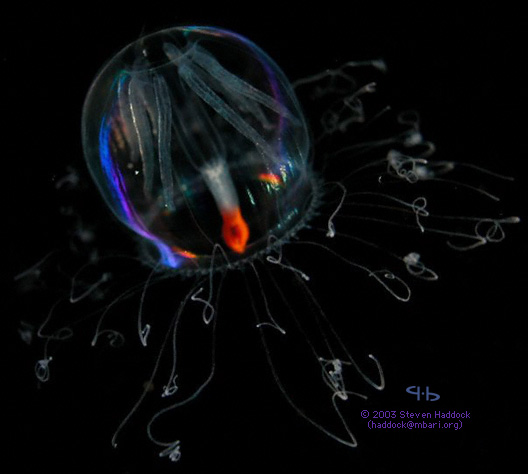
This small hydromedusa in the genus Aglantha is bioluminescent, but the blue and purple colors in this photo are formed by iridescence of thin tissues in its bell. The thickness of the tissue and angle of light striking it can cause bright colors to show up, similar to what happens with the ctenophore Beroe, although produced by a different mechanism. The orange color near the mouth is pigmentation, probably to mask luminescence or attract prey.

Return to the Bioluminescence Web Page i